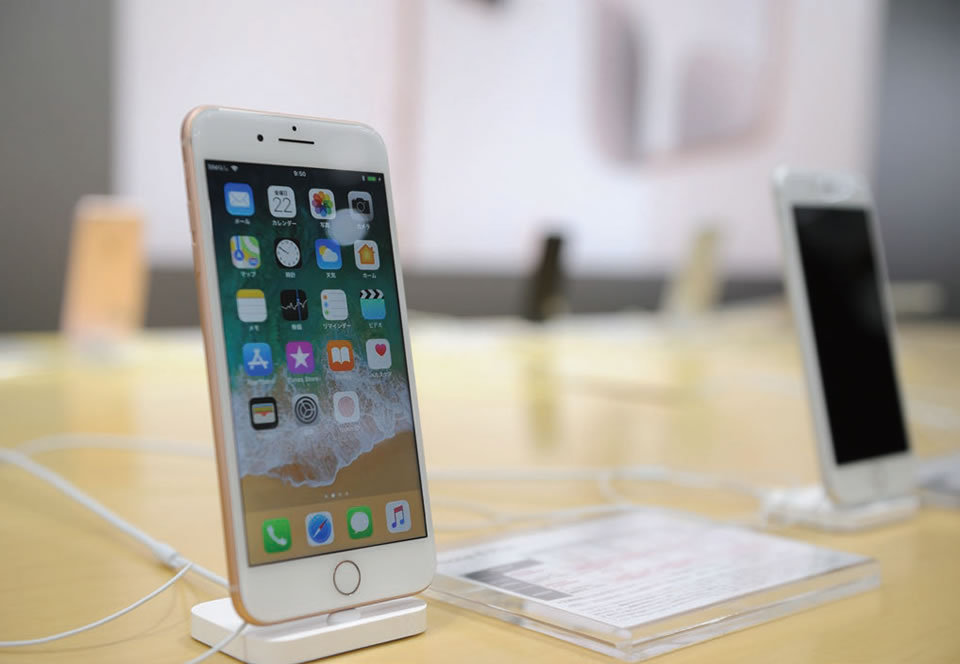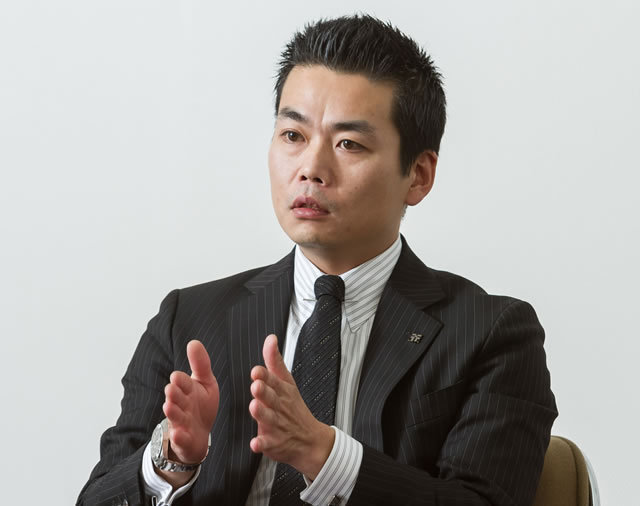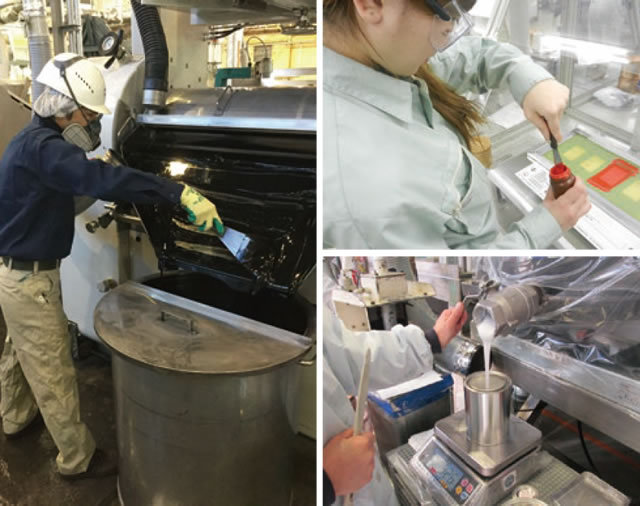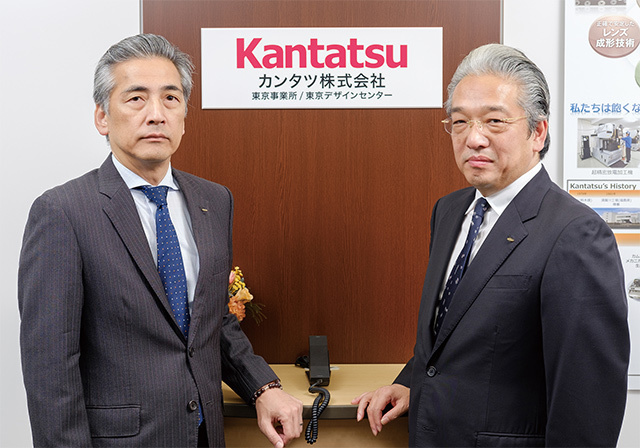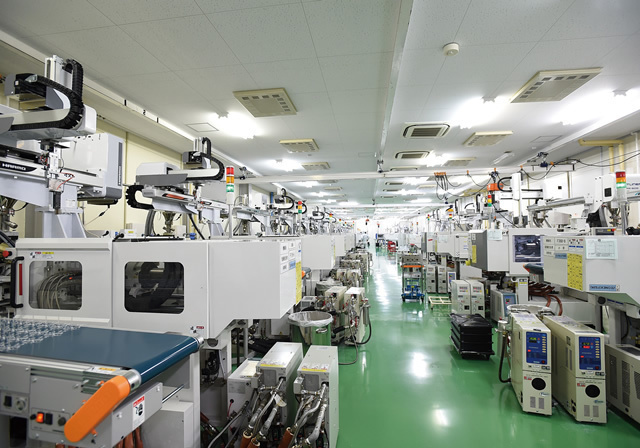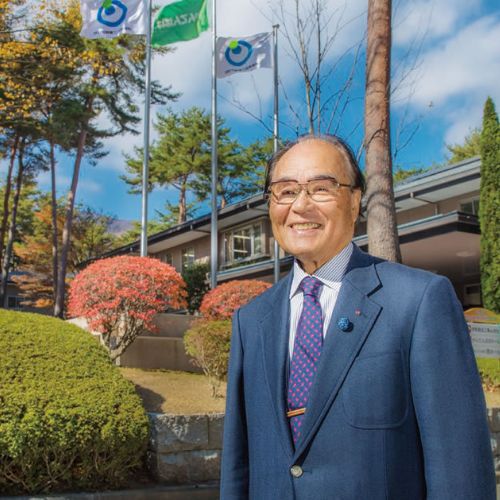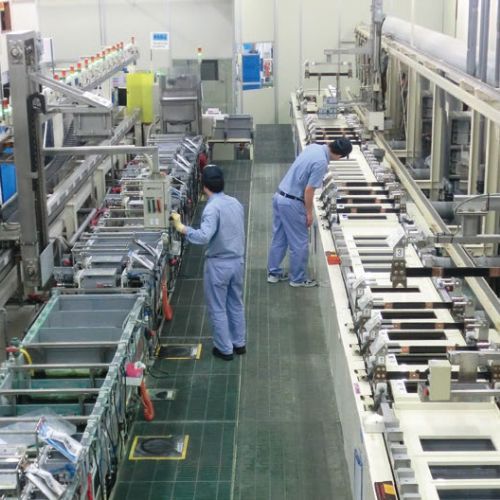People around the world benefit daily from the engineering expertise of Japan’s small and medium enterprises. Examples of their contributions can be found inside Apple’s trademark iPhone. Apple’s 2017 list of over 200 top suppliers includes 55 Japanese companies.
Nobunari Sawanobori, President of Teikoku Printing Inks Mfg. Co., Ltd., established in 1895. In 1992, the company was the first to develop more environmentally friendly water-based ink containing no hazardous substances at the time oil-based ink on metallic panels of industrial products dominated the market.
Many are small and medium enterprises that have developed their own unique technologies. The iPhone’s impressive white panel that fringes its liquid crystal display, for example, comes to life with colored ink developed by Teikoku Printing Inks Mfg. Co., Ltd., headquartered in the old shitamachi part of Tokyo known in the past for its workers and artisans. Established in 1895, the company has a great deal of experience and technological expertise in developing inks for industrial products. Company president Nobunari Sawanobori explains, “Uncompromising persistence is our greatest strength. Still, working with Apple was not easy. We tried all kinds of materials to create the exact white color they designated. Apple required high standards not only for color, but also for blocking to prevent the backlight from showing through the phone frame, as well as for durability and adhesiveness, specifications almost impossible to achieve. Apple, however, respected our work and offered productive feedback, and our engineers worked with passion and enthusiasm to develop the product.
Sawanobori says, “Our high-precision ink, developed in 2016, can draw refined lines and at the same time paint flat surfaces evenly.”
After two years of effort, Teikoku had developed the ink, and the white iPhone launched in 2011 to an eager global market. “I realized that sincere desire to make a good product lets us leap over the language barrier and the borders between countries,” Sawanobori said.
Apple also elected to use Japanese technology to sharpen, model by model, the iPhone’s built-in camera. Kantatsu Co., Ltd, a supplier for lens parts, boasts among the world’s foremost die machining technologies, precise to less than one ten-thousandth of a millimeter. For Apple’s latest mass-produced units, Kantatsu developed its own manufacturing line that assembles the units, automatically and accurately lining up the multiple lenses’ central axis.
Kantatsu’s baseline design and mold fabrication hub is the Sukagawa Plant in Fukushima Prefecture. General Manager of the Business Strategy Division at the plant, Masahiro Oizumi, comments, “After the Great East Japan Earthquake disrupted traffic networks and supply chains, Apple’s engineers came frequently from the U.S. to Fukushima. This really encouraged our workers.” He added, “We are pleased that we can contribute to job creation in Fukushima by manufacturing parts for iPhone.”
Artisans’ expertise and passion, alive in the unique technologies of Japanese small and medium enterprises, thrive in the tiny, innovative products in your palm.
Masahiro Oizumi (right), General Manager of Business Strategy Division and Hiroyuki Tomori, General Manager of Personnel & General Affairs Division (left) at Kantatsu Co., Ltd.


























